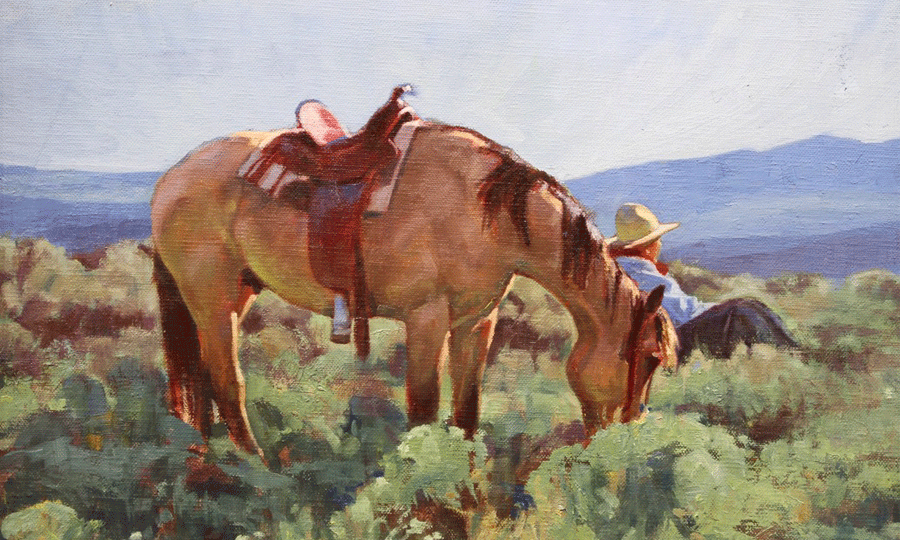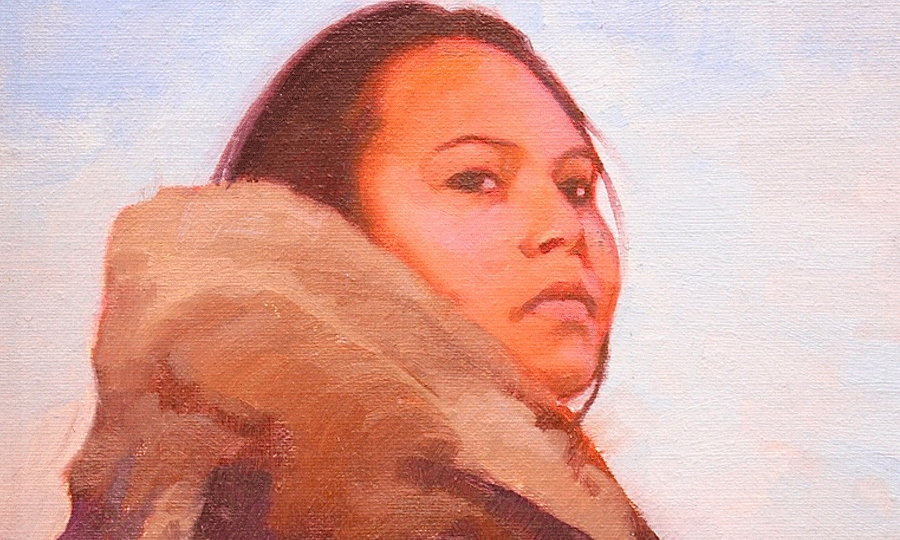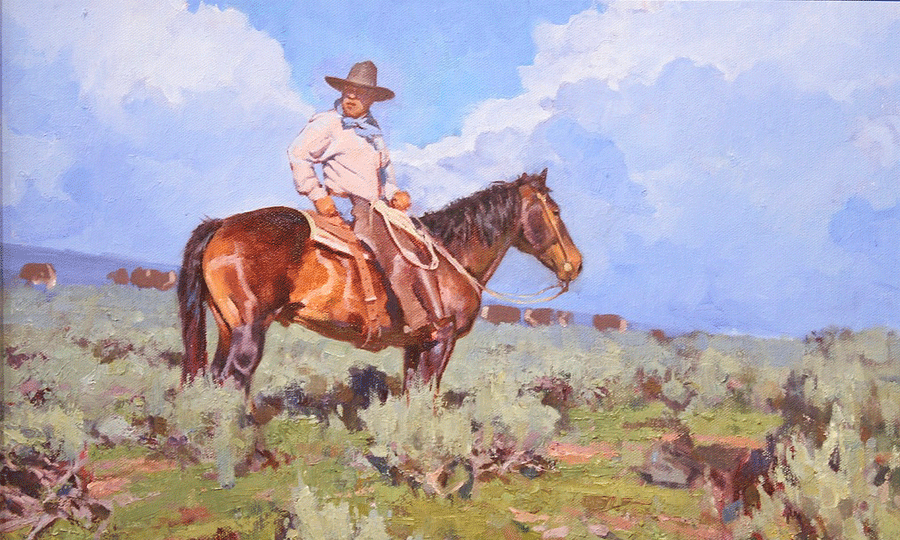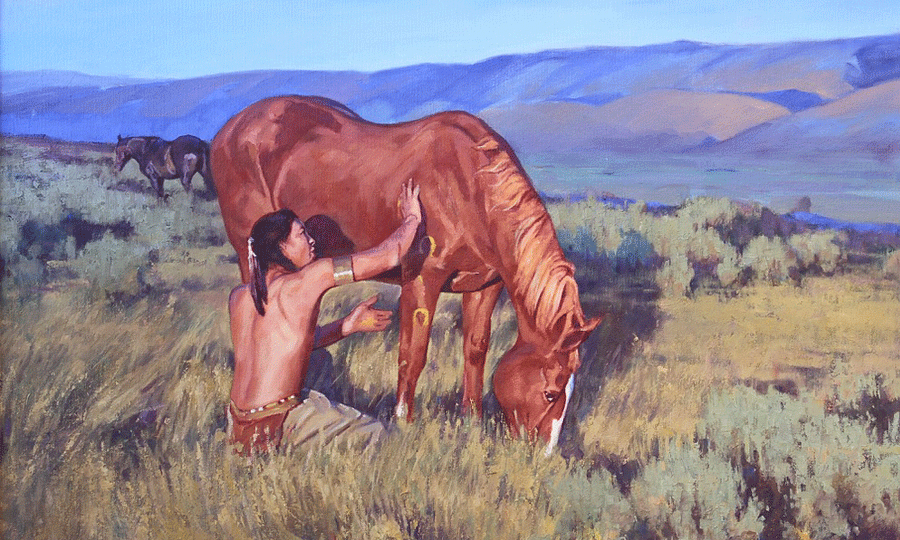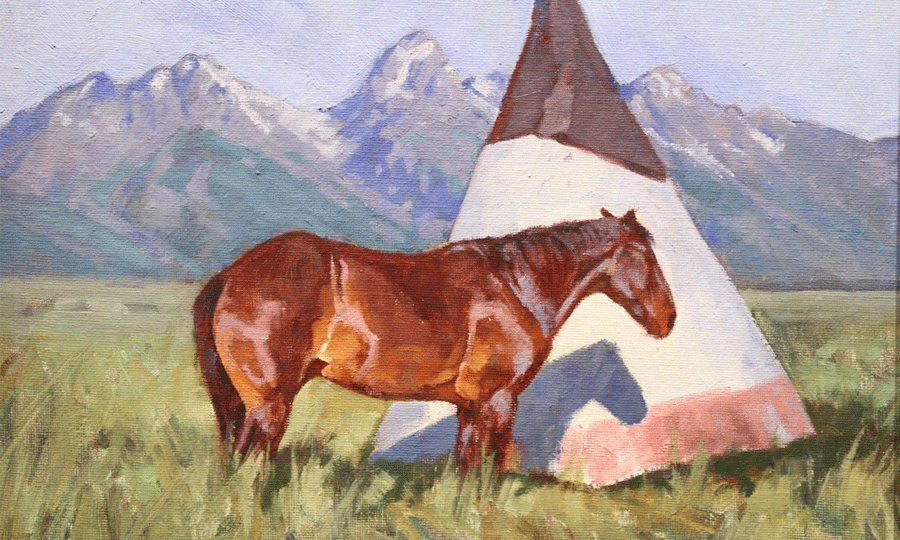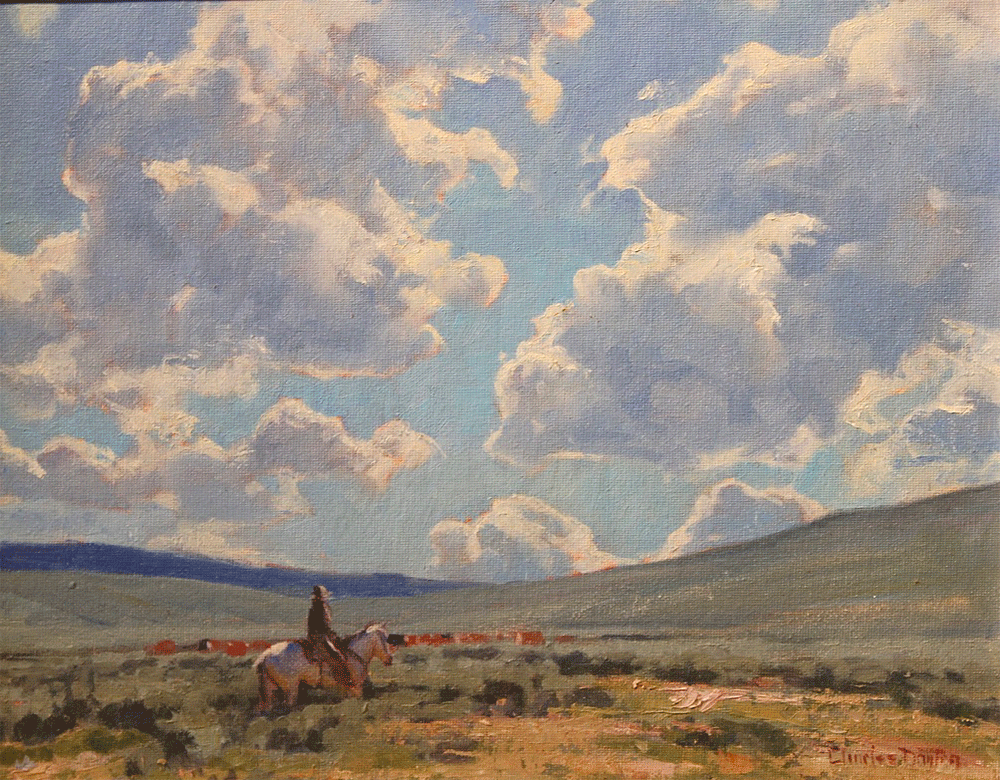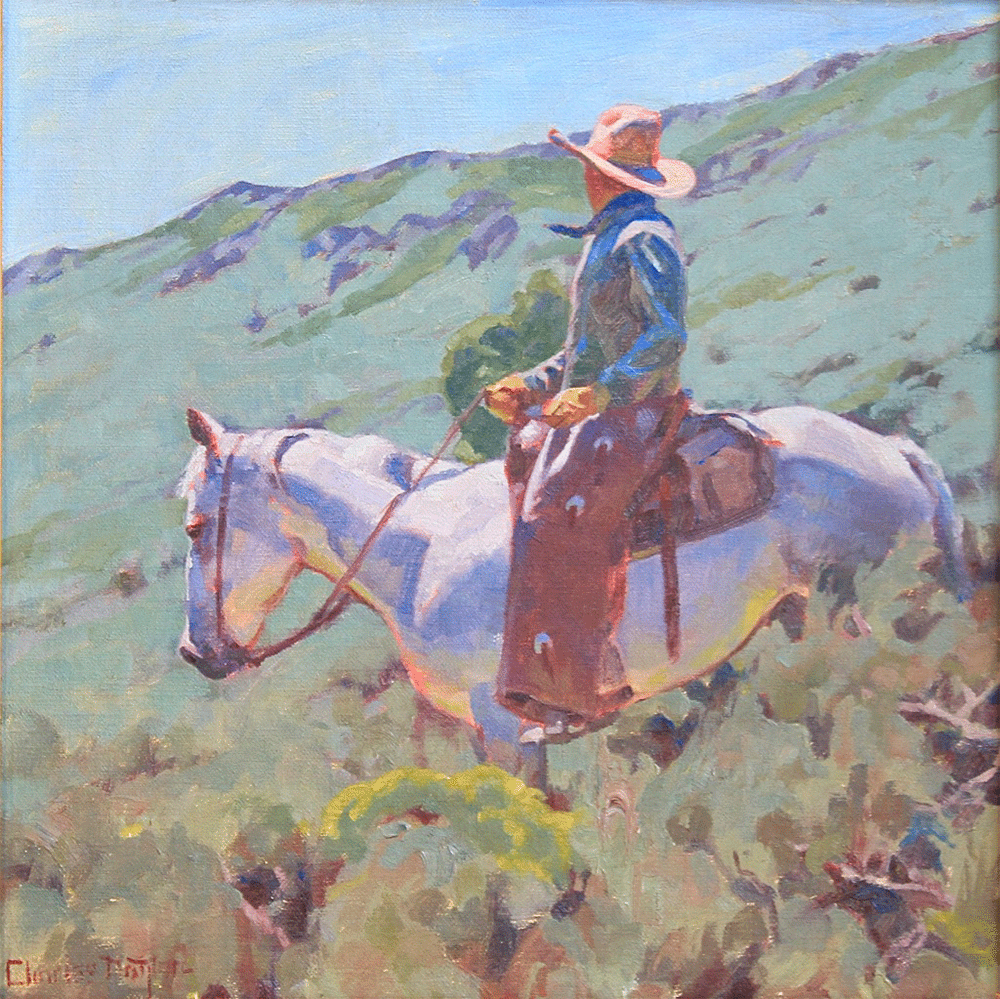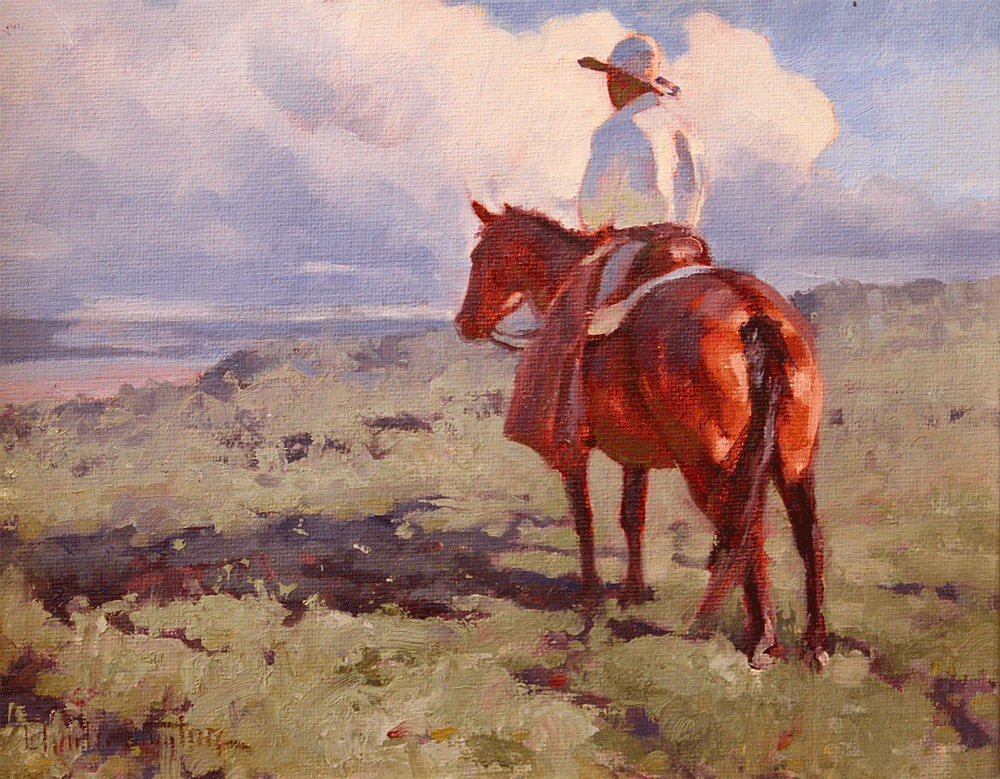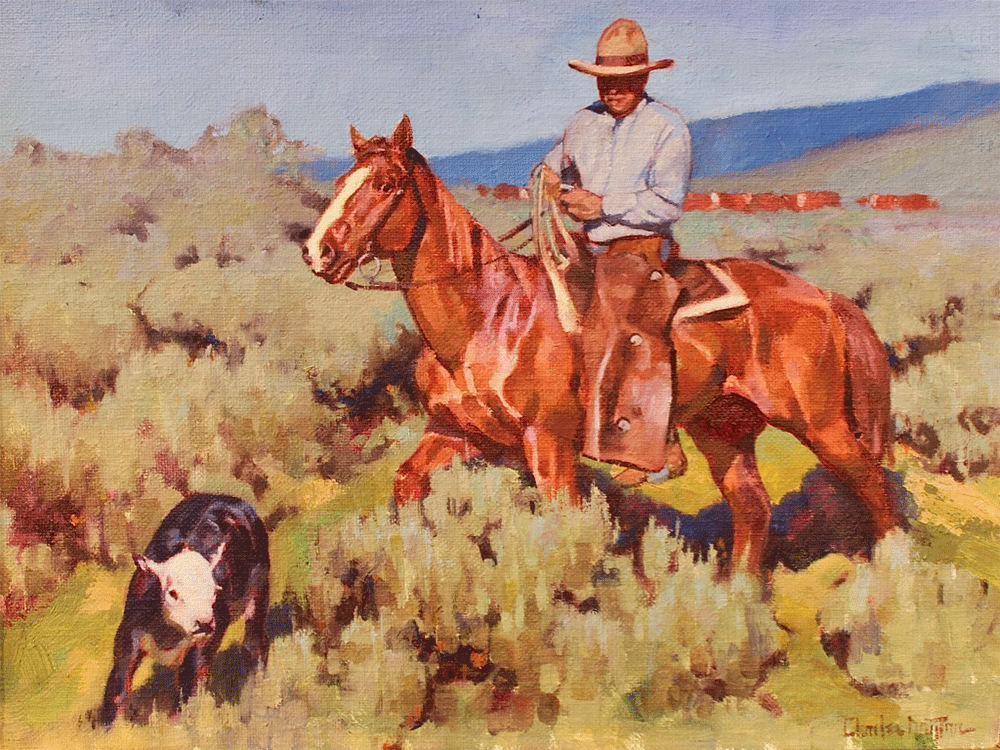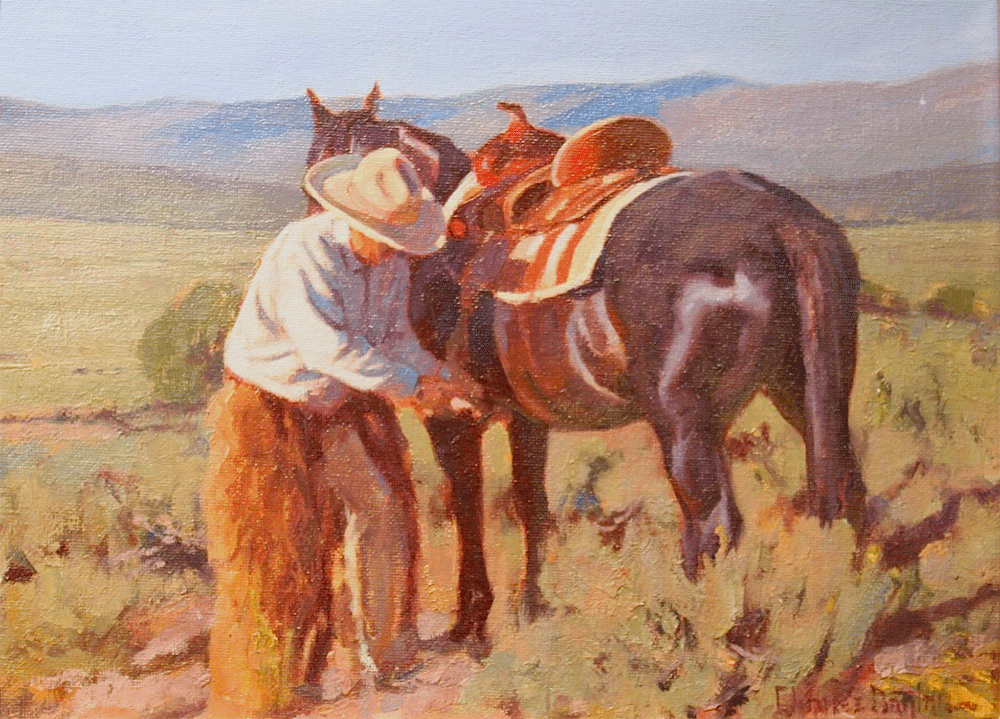Charles Dayton
Charles Dayton was exposed to western art at a young age.
The old ranch-house walls were decorated with framed Charlie Russell calendar prints. Charles honed his drawing skills in college, but didn't start painting until he was 26 years old. A chance visit by artist Karl Thomas proved to be pivotal. Karl asked to see the painting that Charles was working on. Charles nervously showed the fresh paintings to the artist. After a long pause, Karl asked, "have you ever considered doing this professionally?" In that moment, Charles's mindset changed completely. He began participating in workshops and studying art in galleries. He also credits Cowboy Artists of America members Jim Norton and Roy Anderson with providing valuable direction on art's technical aspects. He has also studied with noted artists Dave Wade, Jim Wilcox and Grant Redden.
Although Charles was preparing for an organizational consultant career, he devoted his evenings to honing his artistic skills. In the middle of a two-year graduate program, he finally acknowledged that painting was his destiny. To cement his decision, he moved his family to Cokeville, Wyoming, to be near ranchers and cowboys who represented the authenticity of the West. There, cowboys have a religious bent, forsaking work and leisure on Sunday for things of a spiritual nature. In addition to helping on the family ranch, Charles provides guide services on Bridger National Forest.
"The great redeeming feature of western art is the timelessness of its elements: the figures, landscapes and animals," he says. "How often do you see a painting of a salesperson making a sale, or a group of executives developing strategy? The figure of my father moving cows or making his way up a steep trail with a pack string will always be beautiful."
The old ranch-house walls were decorated with framed Charlie Russell calendar prints. Charles honed his drawing skills in college, but didn't start painting until he was 26 years old. A chance visit by artist Karl Thomas proved to be pivotal. Karl asked to see the painting that Charles was working on. Charles nervously showed the fresh paintings to the artist. After a long pause, Karl asked, "have you ever considered doing this professionally?" In that moment, Charles's mindset changed completely. He began participating in workshops and studying art in galleries. He also credits Cowboy Artists of America members Jim Norton and Roy Anderson with providing valuable direction on art's technical aspects. He has also studied with noted artists Dave Wade, Jim Wilcox and Grant Redden.
Although Charles was preparing for an organizational consultant career, he devoted his evenings to honing his artistic skills. In the middle of a two-year graduate program, he finally acknowledged that painting was his destiny. To cement his decision, he moved his family to Cokeville, Wyoming, to be near ranchers and cowboys who represented the authenticity of the West. There, cowboys have a religious bent, forsaking work and leisure on Sunday for things of a spiritual nature. In addition to helping on the family ranch, Charles provides guide services on Bridger National Forest.
"The great redeeming feature of western art is the timelessness of its elements: the figures, landscapes and animals," he says. "How often do you see a painting of a salesperson making a sale, or a group of executives developing strategy? The figure of my father moving cows or making his way up a steep trail with a pack string will always be beautiful."

LOOKING FOR A SPECIFIC PIECE?
We would be pleased to assist you in locating a western artist or Indian piece that you are particularly interested in. Contact us today to begin the search for your next piece.
CONTACT THE GALLERY















